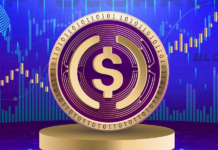
The projects coupled with the curiosity on it will let NFTs and blockchain play a pivotal role in the metaverse.
The ongoing craze about non-fungible tokens (NFTs) has overtaken the world and has become a bone of contention. However, there is one undeniable fact that NFTs will play a crucial role in birthing an ideal metaverse. NFTs will also provide brand-new opportunities for enterprises, investors, and fans in the long run.
Recently, NFTs are being used to enter or “access” the metaverse. But, what value do they have in it? And is it crucial now for people who are into blockchain? Subsequently, it creates NFTs (introduced interoperability and scarcity). However, the projects coupled with curiosity will let NFTs and blockchain play a pivotal role in the metaverse. It is a 3D digital world that allows users and businesses vast opportunities to port real-world assets and services. It can birth an open and fair economy by using blockchain. Since the gaming industry has already been doing what the metaverse plans to, the system of play-to-earn will bridge the gap between NFTs and the metaverse to clear the way for identity, community, and social experiences.
Just about every discussion in this industry hints towards mixing NFTs and the metaverse. We can understand that NFTs and the metaverse are synonymous because of the rapid growth in blockchain gaming, hence driving further growth by working towards a virtual world. In addition, real-life identities and digital avatars give direct access to the metaverse with the help of NFTs. For example, back in a 2019 NFT.NYC event, an NFT-based token was used as an entry ticket. Although no one exclusively called it a metaverse event, it hinted at the coexistence of NFTs and metaverse. Amidst all the technological disruption, NFTs will disrupt the metaverse’s traditional social network paradigm of user interaction, socialisation, and transaction.
After a couple of successful stints of using NFTs as entry-tickets, it paved way for further adoption of NFTs in the metaverse. Today, projects are focused on introducing massive transformations for online interaction. Another example is Decentraland shows where users own metaverse real estate by using “land” tokens. Since the metaverse is a humongous concept, NFTs can widen its scope. Shortly, it can become a form of currency with which virtual property can be bought and gain exclusive access.
In NFTs, a concept called the smart contract, a blockchain programming that helps the network keep NFT transactions that can be accessed later can help create a metaverse economy. At first, NFT-based access can be the primary focus to properly get into the whole metaverse like VIP access and whatnot. From an enterprise’s perspective, they can launch branded merchandise or exclusive access to content to followers, similar to a subscription model. Then, keeping an efficient fan rendezvous aside, NFTs will introduce interoperability outside the metaverse by using location-based features, engagement, and augmented reality. Now, as we slowly pieced together, NFTs and the metaverse are truly a match made in heaven.
Keep your friends close, but your IP closer
One of the most common questions people have about virtual products is how their value can be protected if anyone copies them. Of course, product imitation is a major problem in the real world, but in the virtual universe, it gets more complex. The materials and construction separate it from the copied ones in our tangible world. However, it is easy to produce similar copies in the virtual universe with no variance. But how do you safeguard it? And this is where NFTs come into play.
Blockchain tech might seem daunting at first, but it is easier to understand it as something that helps to record the ownership of an asset, which can be a virtual product or cryptocurrency. The difference in ownership relies on the polarity between the traditional banking system and blockchain, which is decentralised. Since it is decentralised, no one can control, alter, or destroy it.
Therefore, if you have bitcoin, it is recorded in the blockchain and cannot be spent twice, and copies cannot be produced. So, when you buy one bitcoin, that unit is connected to a record in the blockchain. And when you spend it or sell it, you give them a unique reference to its blockchain record.
Welcome to the new economy
Today, users and enterprises can port real-world assets and services in a decentralised virtual environment – the metaverse. Another way of bringing in more real-world assets to the metaverse can be done with the help of gaming models and interoperable blockchain games. The play-to-earn system is the most famous approach which helps in wide user engagement. Players can rely on NFTs and use in-game currency while playing (basically, the more value you add, the more you earn). Furthermore, these play-to-earn games are impartial as players will fully own their assets instead of being controlled by a game compared to traditional gaming.
It further helps in increasing the popularity of play-to-earn gaming models and the metaverse in general. In this, guilds work as intermediaries after buying in-game NFT resources like land assets and can be shared with other players who want to earn in their respective virtual worlds. However, play-to-earn guilds take a small portion of the earnings as charges. This directly leads to creating a virtual economy (fair and open) where players who cannot pay beforehand can take the help of the guilds to kick-start their campaign. Guilds lower the entrance barrier for everyone, and they can compete in this metaverse economy. Guilds make NFT resources more accessible for everyone in the metaverse economy.
The community
Whether it is the real world or the virtual one, a community is destined to exist. For the metaverse, NFTs are crucial as it is used in identification, community and social experiences. For example, keeping certain NFT assets can show a user’s support and dedication for a project and convey various perspectives. This leads like-minded individuals to band into communities to share experiences and create content together. One example can be the NFT avatars.
We must keep in mind that NFT avatars show a player’s true or imagined personality, therefore, allowing players to use NFT avatars as access tokens to enter and move around different places in the metaverse. In this case, NFT avatars can be looked at as an extension of our real-life identities, and we have full ownership to curate and build our virtual identities. Furthermore, by owning avatars, we get virtual membership to exclusive content in the metaverse. Meanwhile, NFT avatars are constantly shaping up experiences and environments of the metaverses with the help of content creation, and startup (business) launches.



































